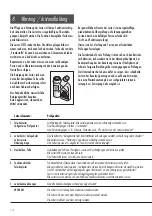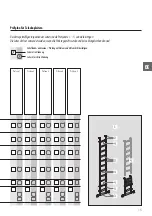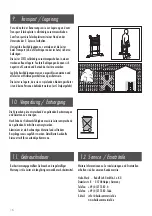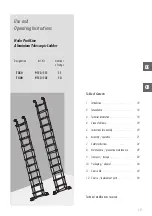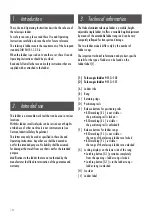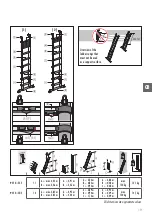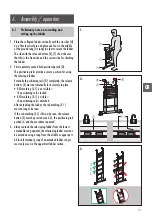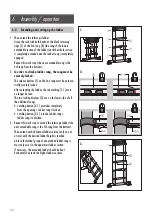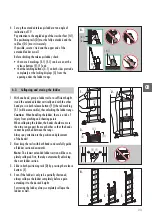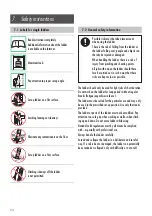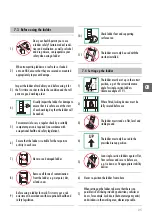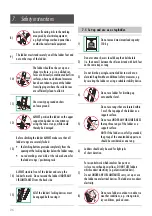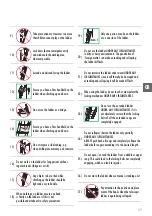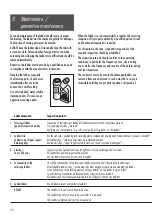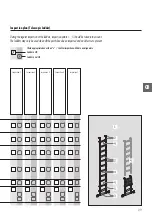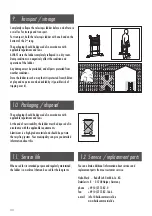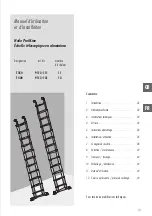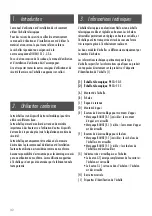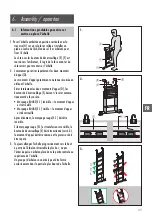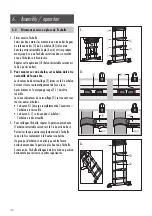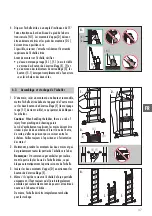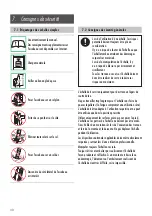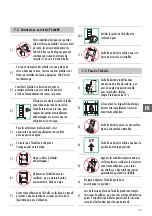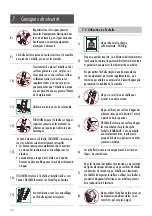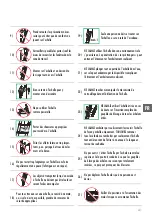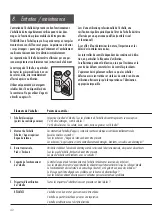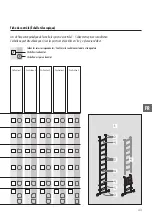
28
Care and maintenance of the ladder should insure its proper
functioning. The ladder must be checked regularly for damages.
The function of moving parts must be ensured.
ALWAYS keep the ladder clean. Occasionally wipe the rails with
a clean dry cloth. Paint and other ‘foreign matter’ can make
extending and collapsing the ladder more difficult and should be
removed immediately.
Repairs to the ladder must be made by a qualified person and
in compliance with the manufacturer’s instructions.
Cleaning the ladder, especially
of all moving parts, should occur
immediately after use in the
event of any visible soiling.
Use only standard, water soluble
cleaning agents. Do not use any
aggressive scouring agents.
Lader elements:
1. Telescopic ladder
(general inspection points)
2. Ladder stile
Ladder rung / Upper support
Retaining rings
3. Crossbar,
Feet / End caps
4. Functionality of the
telescopic ladder.
5. Ladder labels
RESULT:
Inspection points:
Inspection of the telescopic ladder. All ladder elements must be completely present.
Is any damage visible / present?
Are there any contaminants (e.g., dirt, mud, paint, oil or grease) on the ladder?
Are the side rails / positioning rails (including plastic components) possibly bent, twisted, dented, cracked or corroded?
All ladder rungs / retaining rings must be completely present.
Are ladder rungs / upper support possibly worn out, loose, corroded or damaged?
Inspect crossbar, feet and end caps for tightness as well as damage and corrosion.
All ladder feet and end caps must be present.
Are any ladder feet loose, worn out or corroded?
Check the functionality of the telescopic ladder (extending and collapsing the ladder rungs).
All extendable ladder rungs / positioning rails must engage properly when extending the ladder.
Is the functioning of the locking displays (release button) on the ladder rungs ensured?
Can the locking mechanism be released easily using the release buttons?
All ladder rungs must subsequently be able to be collapsed without any problem.
Are all labels present and perfectly legible?
The ladder is OK and can continue to be used.
The ladder may only continue to be used after it is repaired.
The ladder is defective and must be disposed of.
8. Maintenance /
preventive maintenance
When the ladder is used commercially, a regular and recurring
inspection of its proper condition by a qualified person (visual
and functional inspection) is required.
For this purpose, the type, scope and time periods of the
required inspections should be established.
The inspection intervals should conform to the operating
conditions, in particular the frequency of use, stress during
use as well as the frequency and severity of the defects during
previous inspections.
The contractor must also ensure that damaged ladders are
removed from use and stored in such a way that a re-use is
impossible until they are properly repaired or disposed of.
Summary of Contents for 9113-111
Page 2: ...2...
Page 87: ...87 IT...

